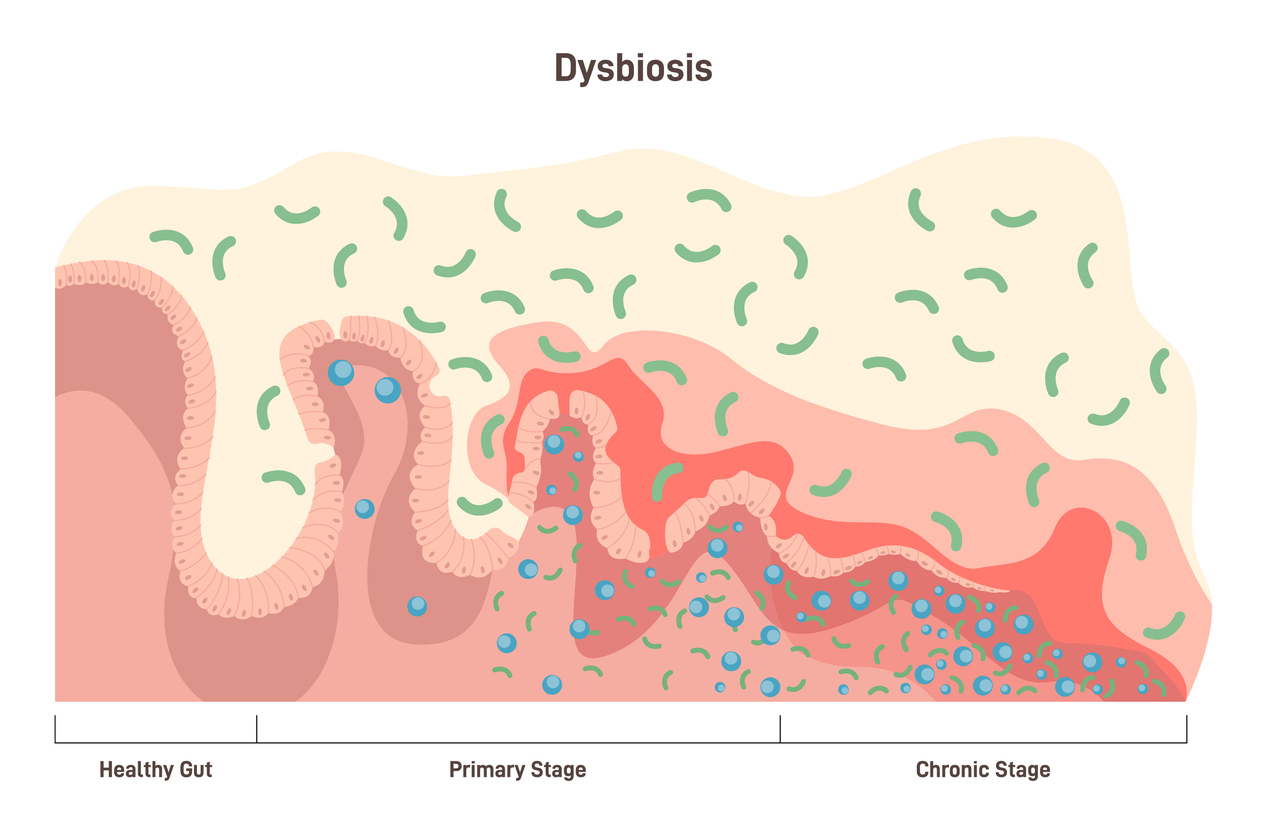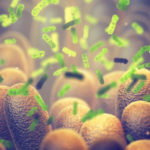Prevent, Manage, and Treat Dysbiosis with Medical Nutrition Therapy
WHAT IS DYSBIOSIS
Dysbiosis is an imbalance or disruption in the composition and function of the body’s microbiome—the diverse community of microorganisms that support health. It can manifest as:
- Reduced microbial diversity
- Overgrowth of harmful microbes
- Loss of beneficial microbes
This imbalance can disrupt the microbiome’s natural equilibrium, potentially contributing to digestive issues, immune dysfunction, skin conditions, and metabolic disorders.
What is Eubiosis
Eubiosis is a state of balance within the gut microbiome, where the diverse community of microorganisms in the gastrointestinal tract functions harmoniously to support overall health.
Dysbiosis is Connected to Both Physical and Mental Health Disorders
Disorders resulting from an imbalance in the microbiome may include:
- Inflammatory bowel disease (Crohn’s Disease and Ulcerative Colitis)
- Irritable bowel syndrome (IBS)
- Leaky Gut
- Food Intolerances
- Diabetes
- Obesity
- Mood disorders
- Fatigue
- Chronic inflammation
- Metabolic syndrome
- Fatty liver disease
- Atherosclerosis
- Malabsorption
Symptoms of Dysbiosis May Include:
Digestive issues
- Bloating
- Diarrhea
- Constipation
- Abdominal cramping
- Food sensitivities
- Food intolerances
- Changes in bowel movements
- Irritable Bowel Syndrome
Skin conditions
- Rashes
- Atopic dermatitis (eczema)
- Psoriasis
- Acne
Other mental and physical conditions
- Fatigue
- Trouble concentrating
- Depression
- Anxiety
- Brain fog
- Difficulty urinating
- Vaginal or rectal itching
- Chest pain.
What Can You Do to Produce Healthy Microbes?
Dysbiosis occurs when the gut microbiome becomes imbalanced, allowing harmful microorganisms to outnumber beneficial ones. These microbes rely on what we eat to survive—while harmful bacteria thrive on processed foods and sugars, beneficial microbes flourish on fiber that our bodies cannot digest.
The most effective way to restore balance—shifting from dysbiosis to eubiosis—is to change your diet. Feeding your gut a diverse, plant-rich diet can promote the growth of healthy microbes within 24 to 48 hours.
Beyond just fostering beneficial bacteria, diet also influences the overall diversity of the gut microbiome. Different types of gut bacteria require different plant fibers to thrive, making dietary variety essential for a resilient and balanced microbiome.
How to Eat if You Have Dysbiosis
What to eat:
- Eat more fruits and vegetables
- Incorporate nuts and seeds
- Include healthy fats in moderation
- Add legumes to your meals
- Opt for whole grains
- Diversify your diet with a variety of foods
Summarily: A real food, mostly plant-based, flexitarian diet is the quickest way to restore balance in your gut.
What to avoid:
- Ultra Processed Foods
- Saturated Fat
- Trans Fats
Should you work with a Registered Dietitian Nutritionist?
Food is medicine and changing your diet is the first step toward improving gut health. As a Registered Dietitian Nutritionist, I use Medical Nutrition Therapy to address dysbiosis by creating personalized nutrition plans. Through online medical nutrition therapy, I tailor dietary interventions to help restore your microbiome and support your overall health.
Read more about dysbiosis here:



